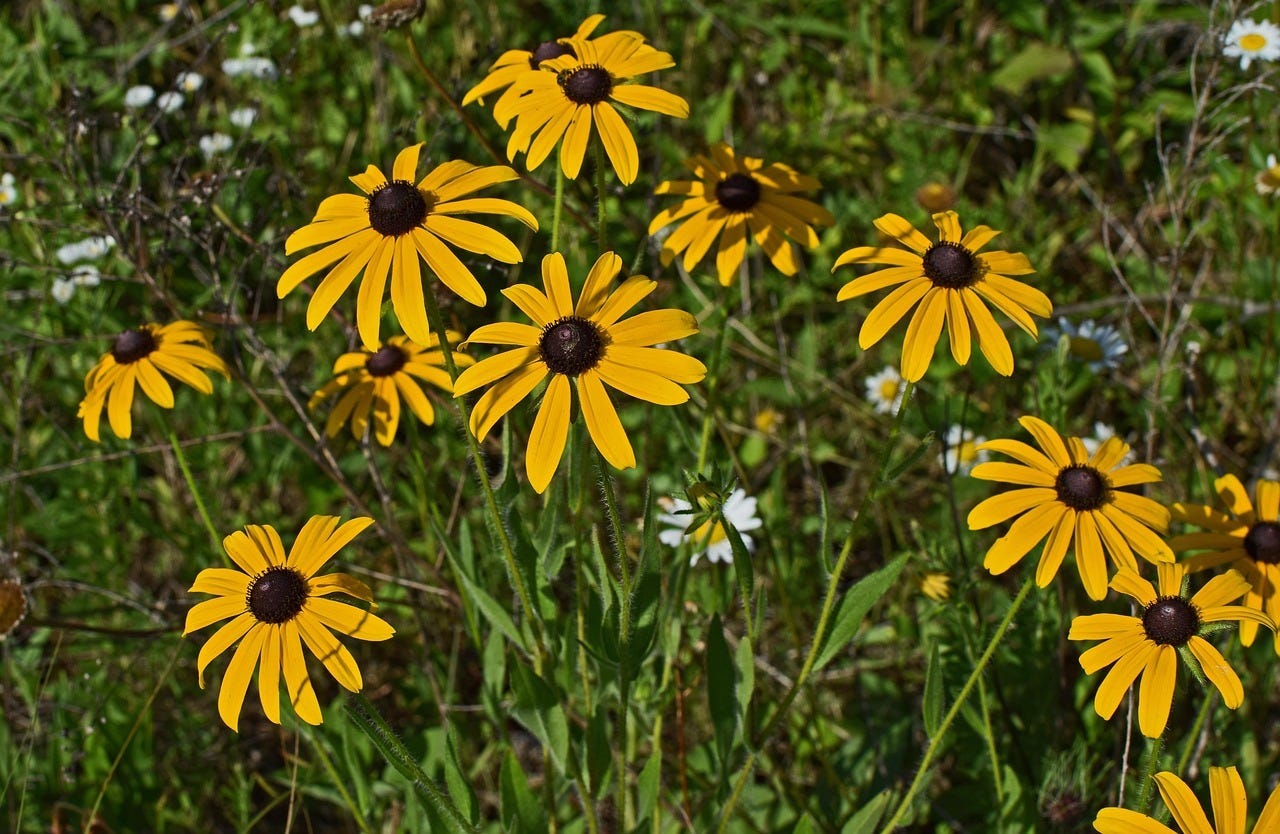How to Create a Garden That Supports Local Wildlife and Conserves Resources
The Benefits of Planting Native Species
When practicing a Conservation Lifestyle, one of the best places to start is in your yard or the landscape surrounding your home or business. I call this Conservation Landscape Management—an approach to designing and maintaining outdoor spaces that benefit wildlife, conserve natural resources, and enhance property value.
Many think conservation happens only in national parks, nature preserves, or remote wilderness areas. But the truth is that every backyard, business landscape, and community green space has the potential to contribute to environmental health. One of the simplest and most effective ways to do this is by planting native species.
Why Native Plants Matter
Native plants have evolved in a particular region over thousands of years, forming intricate relationships with local soils, climate, insects, and wildlife. When you choose native plants over non-native or invasive species, you help restore these natural connections, leading to numerous benefits:
1. Support for Local Wildlife
Native plants provide essential food and shelter for birds, pollinators, and other beneficial creatures. Bees, butterflies, and hummingbirds rely on native flowers for nectar, while native trees and shrubs offer vital nesting sites and cover for wildlife.
2. Water Conservation
Once established, native plants typically require far less water than exotic species, making them an excellent choice for water-wise gardening. This is particularly beneficial in regions prone to drought, where water conservation is crucial.
3. Reduced Need for Chemicals
Unlike non-native plants that may struggle in unfamiliar environments, native species thrive without the need for pesticides, herbicides, or synthetic fertilizers. This means fewer harmful chemicals entering our soil and waterways.
4. Improved Soil Health
Native plants often develop deep root systems that improve soil structure, reduce erosion, and enhance groundwater recharge. This contributes to healthier landscapes and reduces the risk of stormwater runoff, which can carry pollutants into rivers and lakes.
5. Increased Property Value
A well-designed landscape featuring native plants can increase curb appeal and property value. Homeowners and businesses that invest in sustainable landscaping often find that it enhances the beauty of their space while reducing long-term maintenance costs.
How to Create a Native Plant Garden
Getting started with native plants doesn’t require a complete landscape overhaul. Small, gradual changes can make a big difference. Here are some practical steps:
Assess Your Landscape
Observe the sun exposure, soil type, and moisture levels in your yard.
Identify existing plants—are they native, invasive, or non-native?
Choose the Right Plants
Select species native to your specific region. Many local botanical gardens, university extension offices, and native plant societies provide helpful plant lists.
Prioritize plants that support pollinators, such as milkweed for monarch butterflies or oak trees for caterpillars that birds feed their young.
Plant in Layers
Mimic natural ecosystems by incorporating a mix of trees, shrubs, perennials, and groundcovers.
Create habitat diversity with flowering plants for pollinators, berry-producing shrubs for birds, and native grasses for small mammals and insects.
Reduce Lawn Areas
Lawns require frequent mowing, watering, and fertilization. Replacing part of a lawn with native ground covers or meadow-style plantings can save time, money, and resources.
Avoid Pesticides and Herbicides
Many insects, including bees and butterflies, are highly sensitive to chemicals. Choose organic or natural alternatives to maintain a balanced ecosystem.
Be Patient and Observe
Native gardens may take a few seasons to fully establish, but the benefits will grow over time. Enjoy watching birds, butterflies, and other wildlife return to your landscape.
Online Tools to Help You Find Native Plants
If you're wondering which plants are native to your area, several online resources can help:
National Wildlife Federation Native Plant Finder – Enter your zip code to find native plants that support butterflies and birds.
Audubon Native Plants Database—This database provides recommendations for native plants that attract and support birds based on your location.
Lady Bird Johnson Wildflower Center—Search by plant type, region, and growing conditions to find native species in your area.
Xerces Society Pollinator Conservation Plant Lists – Offers region-specific lists of native plants that support pollinators.
USDA PLANTS Database – A comprehensive database of plants found in the U.S., including native and non-native species.
These tools allow you to make informed decisions about what to plant in your yard, helping you create a landscape that supports biodiversity while reducing environmental impact.
Conservation Landscape Management: A Global Movement
While the native plants best suited to your garden will vary depending on where you live, the core principles of Conservation Landscape Management apply worldwide. Whether you’re in a suburban backyard in the United States, an urban rooftop garden in Europe, or a community green space in Asia, planting native species is a meaningful way to support biodiversity and reduce environmental impact.
By making small, intentional choices in our own landscapes, we contribute to a larger conservation movement—one that starts at home but extends far beyond our own backyards.
If you're already practicing Conservation Landscape Management, I’d love to hear about your experiences! Share your stories, photos, and successes with the Conservation Lifestyles community. Together, we can create landscapes that are not only beautiful but also beneficial to the world around us.




